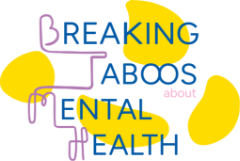Social media were developed with a social and creative purpose. However, they can also become a dangerous place to be, especially for young people and their mental health. Is it possible to find a compromise?
A general overview
In Europe, 98% of adolescents aged between 15 and 24 used internet in 2022, where the global average is 75%. According to the GWI platform, European Gen Z spends an average of 3 hours per day on social media, slight less than Latin America (3 hours 55 min), Middle East and Africa (3h 26 min) and North America (3 h). 35% of adolescents taken into account by the survey is “worried of spending too much time on social media” and the 42% uses social media to “fill spare time”; compared with other aged gaps, adolescents are also more likely to be influenced by content creators.
What are the consequences?
The amount of time spent scrolling feeds is the main aspect when studying the impact of social media on mental health. The US Surgeon General’s Advisory reports that “adolescents who spend more than three hours per day on social media have double the risk of experiencing poor mental health outcomes including symptoms of depression and anxiety.
The same report states that “on a typical weekday, nearly 1-in-3 adolescents report using screen media until midnight or later. While screen media use encompasses various digital activities, social media applications are the most used commonly applications by adolescents”. Since social media are based on algorithms designed to show users contents in line with their preferences – stimulating the brain’s reward system by doing that – their uncontrolled use can be compared to a real addiction, with consequences similar to those liked to substance use or gambling addiction.
The progressive reduction in hours of sleep, due to the alteration of sleep-wake rhythm caused by exposure to screen light, can arise depressive symptoms and suicidal thoughts and behaviour. Moreover, the abuse of social media determines a significant increase in probability of developing ADHD, as well as bringing out the so-called FOMO (“fear of missing out”), that is the anxiety of being excluded from events and life in general.
Among young women, the most severe consequences of continuous exposure to unattainable models is the onset of eating disorders, exacerbated by the frequent use of filters and programs to edit photos mainly spread on Instragram as well as by the obsessive search for approval through likes and interactions.
There are also explicitly harmful contents, such as those which incite young people to perform extreme gestures, often leading to dramatic consequences: the role of Tik Tok in widespreading dangerous challenges (The Blackout challenge, the Benadryl challenge, the Skull Breaker challenge, and so on) has to be mentioned.
Finally, the social media’s individualism, strengthen by the social isolation imposed by the pandemic, amplifies the sense of loneliness which constitutes a fertile ground for mental disorders. In short, we are increasingly connected and less and less interconnected.
What can we do about it?
If the radical choice to turn off everything forever is not practicable, what can be done is to place limits on the use of social media, establishing safety boundaries within which children and adolescents can move. In order to get this, it’s necessary a a cooperation between different parts: public institutions, technology companies, parents and, of course, young users, who not only should learn about an healthier use of the means at their disposal, but also become themselves ambassadors of good practices and spread greater awareness of the importance of mental health among their peers. This is how we get to the positive side of social media.
The good side of social media: sharing awareness and breaking taboos
Not just places of solitude, therefore, but spaces of dialogue where taboos are dismantled, like after like, and the illness is transformed into a bridge that unites people, rather than isolating them. This is what happens on many social profiles who deal with mental health topics by using art and irony. There, disclosure and normalisation pass through the medium of colorful drawings or irreverent writings. Examples of this are the accounts of the british illustrator Gemma Correll (@gemmacorrell), the Canadian Maude Bergeron (@lesfoliespassageres), the Americans Liz Fosslien and Mollie West Duffy (@lizandmollie) and the Italian psychotherapist and illustrator Francesca Parisi (@terapiadinterni).
Conclusion
When used recklessly, social media can damage people’s mental health. However, through the same tools people can acquire resources to deal with their disease, breaking the crystal ball of prejudice and fear surrounding them and fueling a virtuous chain of experiences, support and sharing. In this way, they fully exploit the potential of social media in influencing (this time positively) the users, particularly the younger ones.
Text by Giulia Castelli
References
- GWI. (2023). Social media by generation. Infographic. https://www.gwi.com/reports/social-media-use-by-generation
- US Public Health Service. (2023). Social Media and Youth Mental Health: The U.S. Surgeon General’s Advisory. https://www.hhs.gov/sites/default/files/sg-youth-mental-health-social-media-advisory.pdf
Note: When talking about the relationship between young people and social media, It has to be stressed that there’s no evidence of a direct correlation between use of social media and decline in mental health to date. Moreover, statistics can never be exhaustive in outlining a such diversified panorama. Young people’s relationship with internet, indeed, and the impact of this on their health, can change according to their strenghts and vulnerabilities, as well as to the amount of time the spend on social media and to their social, cultural and economical backgrounds.

